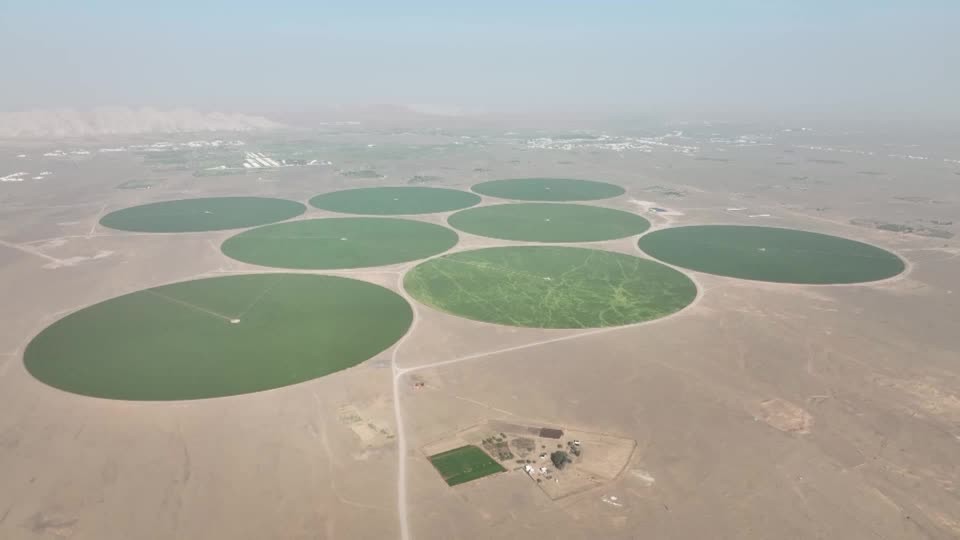In the heart of Sharjah, where only sand once stretched endlessly now lies a flourishing wheat farm in Mleiha, poised to embrace its first harvest, according to local media report.
The United Arab Emirate (UAE) National reported that the Sharjah ruler, Sheikh Dr Sultan bin Muhammad Al Qasimi, inaugurated the farm’s first phase in November, with machinery driving across the fields to distribute seeds.
In just few months, the desolate desert terrain has transformed into a vivid green haven. This farm, which spans an amazing 400 hectares – roughly 500 football fields – is a symbol of transformation. The aim, however, is to reach a total area of 1,900 hectares in phases.
The once barren land now has the potential to produce 1,700 tonnes of wheat.
- Why onion farmers, dealers are not smiling in Jos market
- Food crisis: Why gov’t must focus on rice, maize, wheat, millet, sorghum
“We are expecting the harvesting date to be any time between March 15 and 20. The wheat will be going to the local market here in Sharjah and UAE,” said Dr Khalifa Musabeh Ahmed Alteneiji, the chairman of the Department of Agriculture and Livestock to the UAE National.
The UAE is growing this wheat without the use of pesticides, chemicals or genetically modified seeds.
“We are expecting that the products will be available in the market in May or June,” Dr Alteneiji said..
Dr Alteneiji explained the importance of growing the crop in a country that imports 1.7 million tonnes of wheat.
“Wheat is a strategic commodity with high nutritional value that can be stored for a long time,” he added.
The farm is outfitted with cutting edge equipment, such as satellites that take thermal pictures of the property and soil sensors. To prevent waste, the sensors can gauge the amount of water in the soil.
A weather station on the farm can forecast temperature, wind speed and humidity for a maximum of 48 hours. The farm reduces irrigation if precipitation is expected.
“The fields are irrigated using a reservoir with a capacity of 16,000 cubic metres. In one day, up to 60,000 cubic metres of water can be generated out using six large suction pumps.
“The farm uses pivot irrigation consisting of mechanised sprinkler systems, which can be moved using motors. The satellite monitoring and sprinkler systems can be accessed remotely by using apps.
“From seeding to irrigation and harvest, all agricultural practices are automated and mechanised, reducing the dependence on humans. Currently, the farm operates with the help of only two engineers and six to seven workers,” the National reported.

 Join Daily Trust WhatsApp Community For Quick Access To News and Happenings Around You.
Join Daily Trust WhatsApp Community For Quick Access To News and Happenings Around You.


